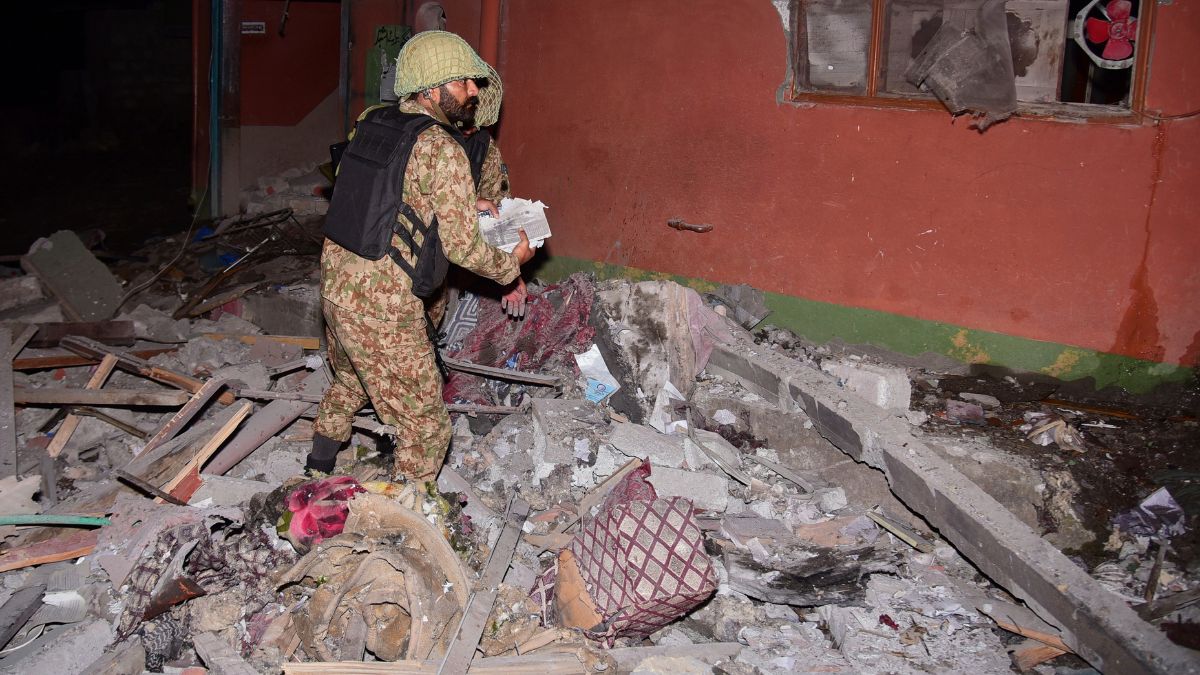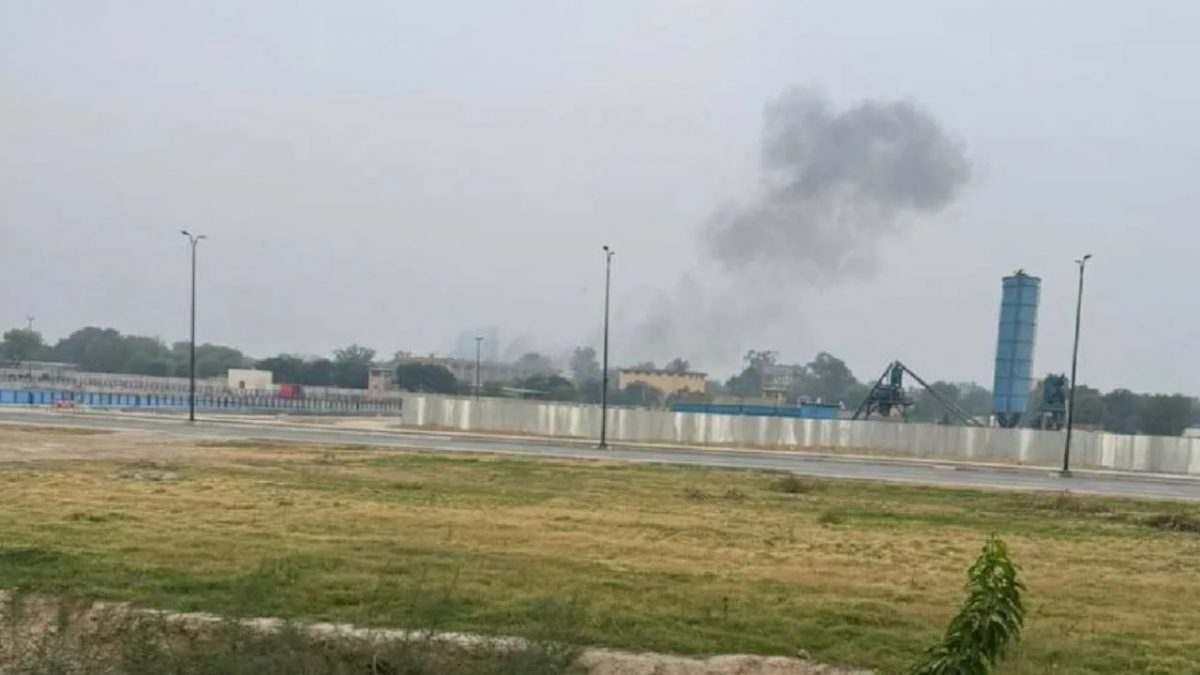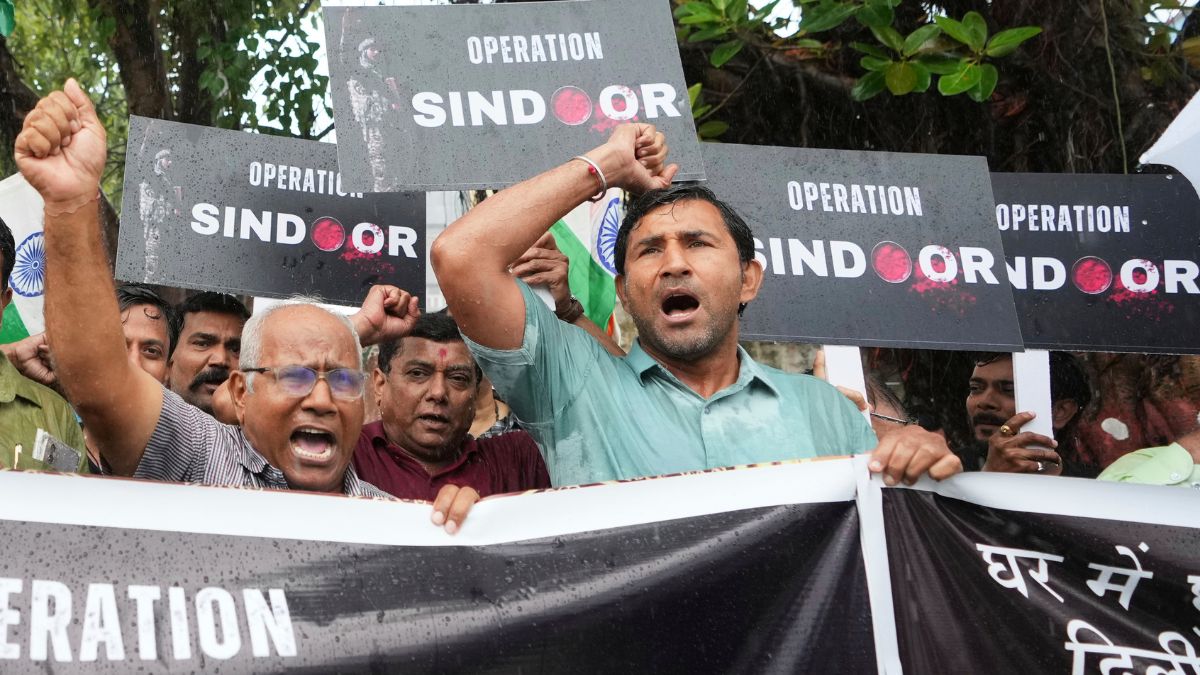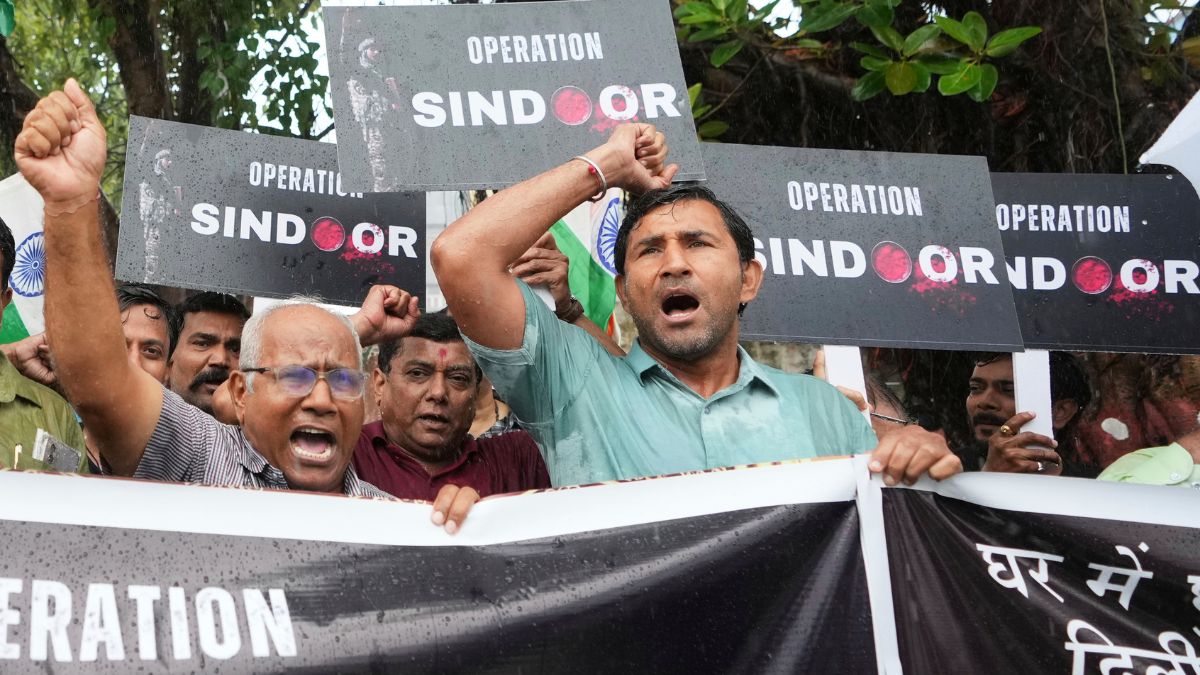India used indigenously-built SkyStriker ‘suicide drones’ to carry out precision strikes in Pakistan and Pakistan-occupied Kashmir (PoK), along with Scalp cruise missiles and Hammer bombs.
They were developed by Bengaluru-based Alpha Design (ADTL) in collaboration with Israel’s Elbit Systems.
This was India’s first strike in Pakistan’s Punjab region since the war in 1971, combining both land and air forces in a joint operation.
Catch all the live updates from Operation Sindoor here
Named Operation Sindoor, the strike came as a surprise to Pakistan. The mission was planned and carried out by all three Indian armed forces, who launched accurate missile attacks during the night.
The selected targets were believed to be linked to the leadership of Jaish-e-Mohammed and Lashkar-e-Taiba, groups involved in sponsoring terrorism in India.
In this explainer, we explore what the locally developed drones are, how they operate, and the key details about Operation Sindoor.
What are SkyStriker ‘suicide drones’?
The SkyStriker drones, made by Alpha Design (ADTL) in Bengaluru with support from Elbit Systems of Israel, were first used during Operation Sindoor in the forward areas of Jammu and Kashmir.
Officially known as the Low-Cost Miniature Swarm Drone or Loitering Munition System (LMS), these drones are built to find and destroy targets chosen by operators, using a warhead fitted inside the body, according to CNN-News18.
The report added that the Indian Army had urgently ordered about 100 SkyStriker units in 2021.
According to the Elbit Security Systems of Israel, the SkyStriker flies like an unmanned aircraft and hits like a missile. It is a loitering munition made for long-range, precision strikes in tactical situations.
With its electric propulsion and quiet flight, the SkyStriker is suited for silent, low-level missions. It can locate, follow, and attack marked targets with either a 5 kg or 10 kg warhead fitted in its body.
Each drone is self-directed and has a range of 100 km. Its quiet design allows it to fly under the radar at low altitudes during operations, according to The Times of India.
SkyStriker is seen as a low-cost solution that still delivers accurate strikes over long distances.
What are loitering munitions?
Loitering munitions are precision weapons that hover over a target area before attacking. They can be remotely operated or function on their own, scanning for and hitting targets.
Once they find their mark, they crash into it and explode.
They are often referred to as suicide drones, kamikaze drones or exploding drones.
How do they function?
Loitering munitions carry a warhead and can wait around in the sky until they spot a target. When they do, they dive in and destroy it.
They are useful in hitting hidden or short-term targets quickly without putting expensive military equipment or personnel at risk. They also make it possible to pick targets more carefully, according to Johnnette Technologies.
Some of these drones are fitted with artificial intelligence. This allows them to handle complex missions with less human control, making them faster and more efficient than older systems.
Unlike regular unmanned aerial vehicles (UAVs), which are often used for surveillance or gathering information, loitering munitions are made to directly attack targets.
In December last year, the Indian Army received 480 loitering munitions from a defence company based in Nagpur. These had over 75 per cent Indian-made parts.
The first locally made loitering munition, Nagastra-1, was developed by Solar Industries in Nagpur. The company supplied all 480 units to the army.
Loitering munitions have been around since the 1980s. Over time, they have been used more widely for different ranges - short (2-15 km), medium (15-50 km), and long (50-100 km). These are used in missions such as targeting enemy troops, bunkers, tanks, air bases, missile sites and other important infrastructure.
Pakistan’s reaction to Indian missile strikes
Pakistan Prime Minister Shehbaz Sharif described India’s missile strikes on terror camps as an “act of war” and warned of a strong reply.
“Pakistan has every right to give a strong response to this war imposed by India… The Pakistani nation and its armed forces know very well how to deal with the enemy. We will never allow the enemy to succeed in its malicious objectives,” he posted on X after India confirmed the strikes.
In another statement, the Pakistani government said the “reckless action” had pushed the two nuclear-armed countries “closer to a major conflict”.
What is Operation Sindoor?
In the early hours of Wednesday, India carried out missile strikes on nine terror-related locations across Pakistan and Pakistan-occupied Kashmir.
One of the sites included Bahawalpur, a place known to be linked to the Jaish-e-Mohammad group.
Operation Sindoor UPDATES: Here is the list of nine terror facility locations in Pakistan and Pakistan-occupied Kashmir that have been successfully neutralised-
— Press Trust of India (@PTI_News) May 7, 2025
1. Markaz Subhan Allah, Bahawalpur - JeM
2. Markaz Taiba, Muridke - LeT
3. Sarjal, Tehra Kalan - JeM
4. Mehmoona Joya,… pic.twitter.com/Q3Q6vyw0Sa
The Indian Army confirmed the operation in a statement released at 1.44 am.
According to the army, the mission focused on terror bases that were behind attacks on India, including the recent Pahalgam attack.
The army said the strikes were carried out in a careful and controlled way. They did not target any Pakistani military sites to avoid an escalation.“
A little while ago, the Indian Armed forces launched ‘Operation Sindoor’ hitting terrorist infrastructure in Pakistan and Pakistan-occupied Jammu and Kashmir from where terrorist attacks against India have been planned and directed," the Army said.
Sources told CNN-News18 that the locations struck were training camps linked to Masood Azhar and Hafiz Saeed. These sites were reportedly used to train and prepare new recruits, some of whom were sent towards the Line of Control for infiltration.
The operation took place exactly two weeks after the April 22 attack in Pahalgam, which claimed 26 lives.
Prime Minister Narendra Modi, who had held several meetings following the Pahalgam incident, was closely monitoring the operation throughout the night. He had earlier promised to “identify, track, and punish” those behind the attack and their supporters.
After the missile strikes, the Pakistani army responded by firing artillery along the Line of Control in the Poonch-Rajouri area. Pakistan has violated the ceasefire for 14 days in a row.
Soon after the strikes, the Indian Army shared an image online with the words: “Operation Sindoor” and the hashtag #PahalgamTerrorAttack, along with the message: “Justice is Served. Jai Hind!”
Later, in a press release, the Indian military said, “No Pakistani military facilities have been targeted. India has demonstrated considerable restraint in selection of targets and method of execution.”
While the operation was underway, senior Indian officials informed key international partners about the steps taken. Countries briefed included the United States, United Kingdom, Saudi Arabia, United Arab Emirates, and Russia.
With inputs from agencies


)
)
)
)
)
)
)
)
)